A Private Tour today, with the focus on trying to photograph birds rather than just looking at them. It was meant to be a sunny morning, with cloud increasing in the afternoon and the possibility of showers. Instead, there was more patchy cloud this morning and it was sunny and warm this afternoon – the wrong way round!
We spent the morning at Snettisham Coastal Park. As we walked in, a male Greenfinch was on the ground feeding on the short grass. We could hear various warblers singing: Common Whitethroat, Chiffchaff, Sedge and Cetti’s Warbler. But none of them wanted to pose for the cameras. We had a quick look out at the Wash from the outer seawall, but the tide was in and there wasn’t a lot flying past out over the sea.
As we set off up the middle of the Coastal Park, we could hear the distinctive rattling song of a Lesser Whitethroat now. It flew across to a large hawthorn on the edge of the reeds where we watched it feeding on one of the longer branches for a minute or so. When it was joined by a second, the two of them flew out and across to the bushes over on the seawall.
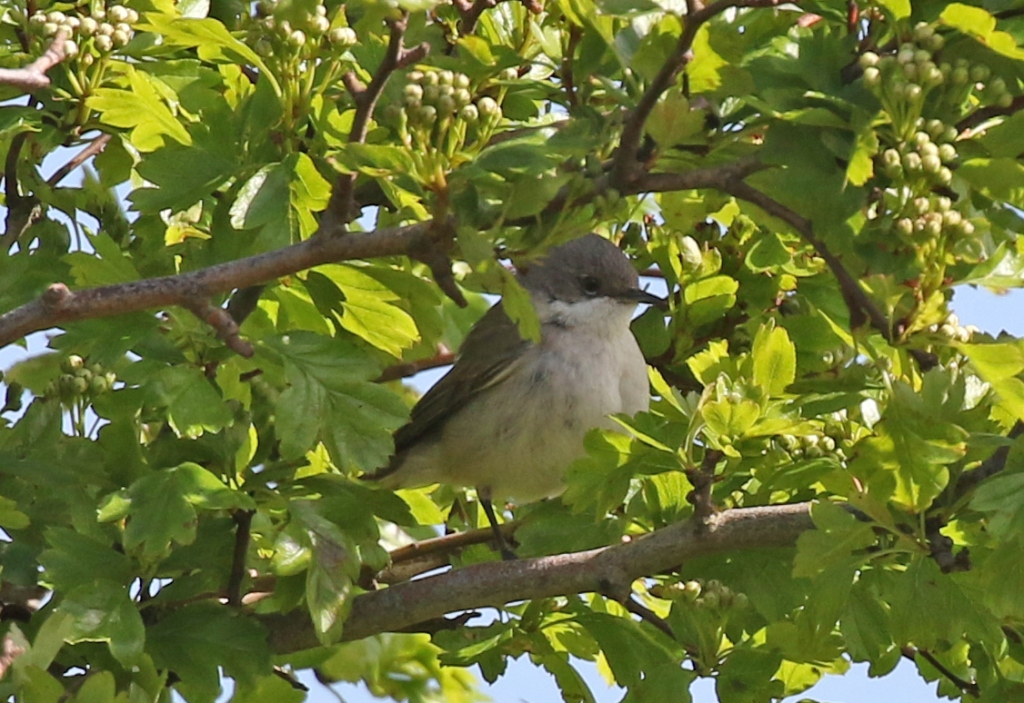
There were lots of Goldfinches and Linnets in the bushes, and more warblers, as we made our way north. A Cetti’s Warbler was calling ahead of us in the brambles and flew up into a hawthorn next to the path, where it gave a quick burst of song. It only perched there briefly though, and quickly flew across to the other side of the path, disappearing back into the thicker vegetation.
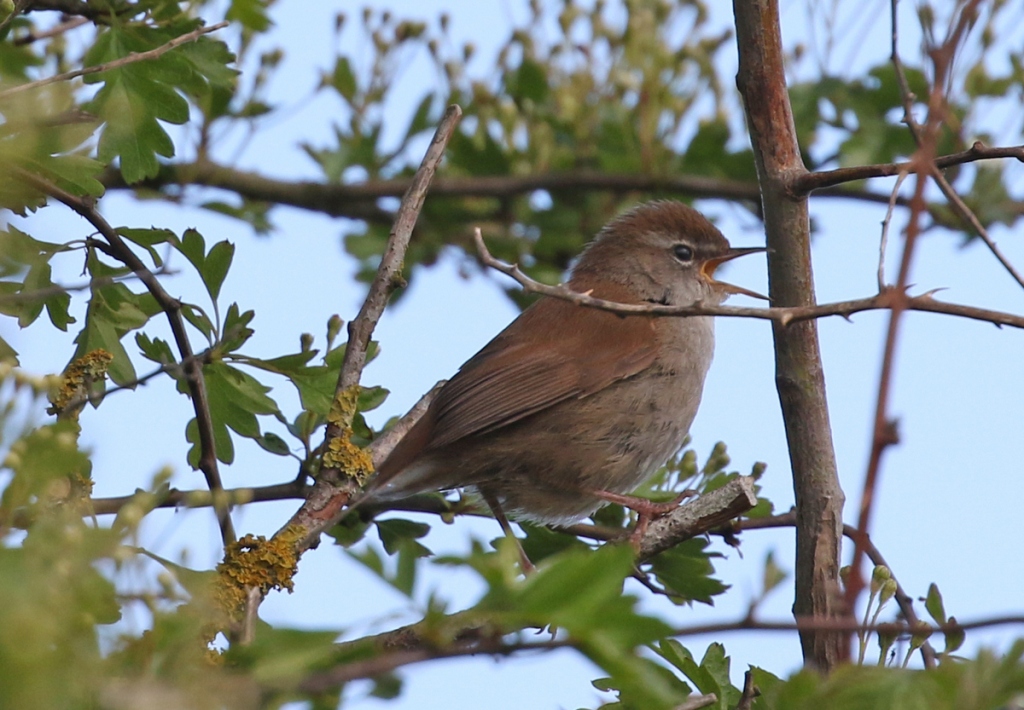
A steady succession of Swallows came low over the bushes, migrants on their way, heading south round the Wash. There was no sign of the Turtle Dove as we walked up towards its favourite tree and when two Turtle Doves flew past away from us and disappeared into the bushes, we thought that was it. We stopped to admire a male Stonechat which perched on some low bushes in the middle, and a female appeared nearby too.
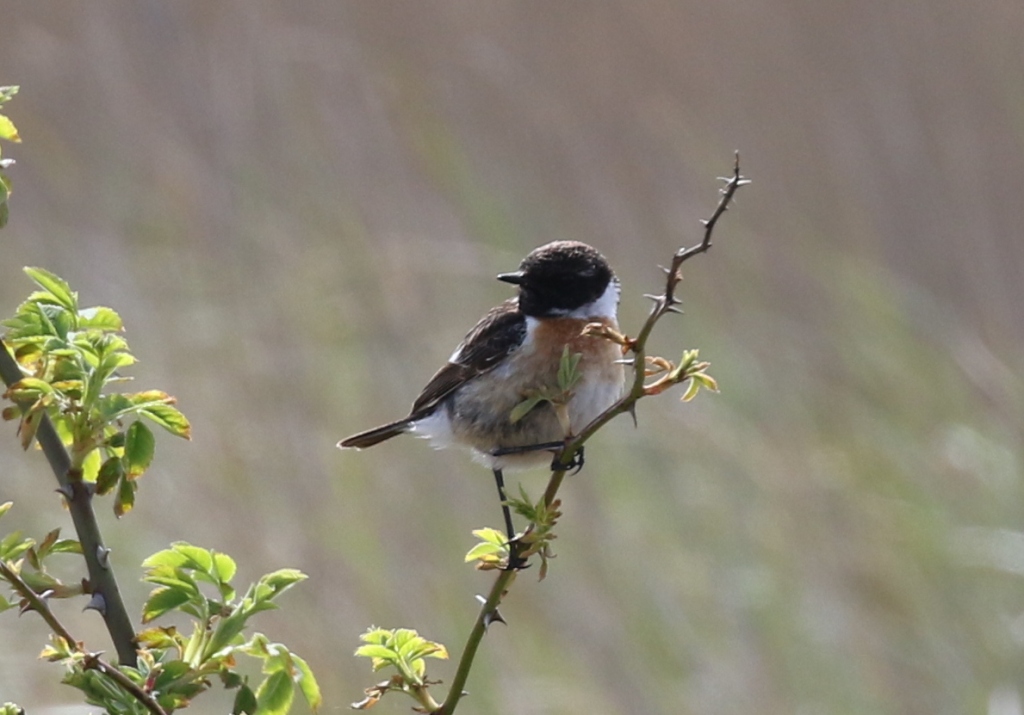
While we were watching the Stonechats, we heard the male Turtle Dove purring now from its favourite tree. Had it flown back while we weren’t looking. Then another Turtle Dove started purring from somewhere in the bushes off to our right, in the direction where the pair had disappeared earlier, so presumably different birds. We set up the scope and had a good view of the lone male perched in the branches of a dead tree.
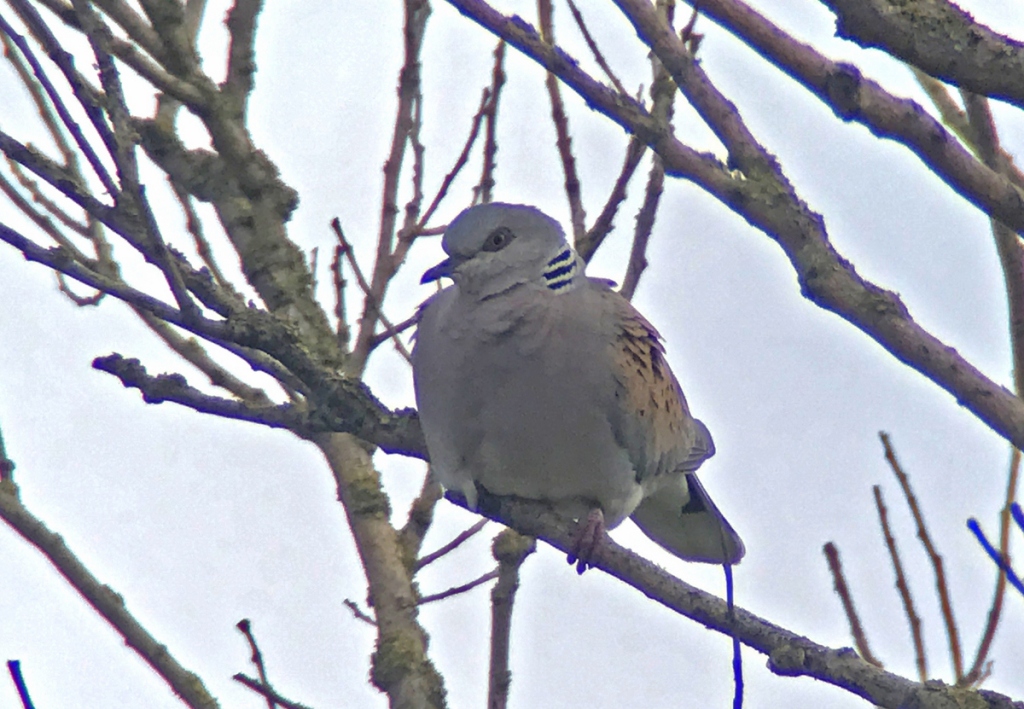
Then we noticed a Barn Owl flying around over the short grass out in the middle, beyond the bushes. We didn’t know which way to look! As we walked on along the path, the Turtle Dove took off and launched into its display flight. We found the Barn Owl again, but it was always rather distant ahead of us. We figured we would catch up with it somewhere later.
From up on the seawall again, the tide was going out now and there were lots of Oystercatchers out on the mud. A woman stopped to talk to us, she was a volunteer with the Wash Wader Ringing Group looking for one satellite Oystercatcher with them. Without a current fix, it was like looking for a needle in haystack! More Oystercatchers were still commuting from where they had been roosting on the marshes inland out to the beach.
As we walked across by the crossbank to the inner seawall, a Willow Warbler was singing in the bushes, along with another Lesser Whitethroat, and a couple more Common Whitethroats. Climbing up onto the inner seawall, the Barn Owl was now hunting over the bank just a little further up. It disappeared behind the bend in the bank, so we went through the gate and walked round on top. The Barn Owl was on a fence post just round the corner and took off when it saw us, but thankfully did a nice fly round, coming straight past below us.
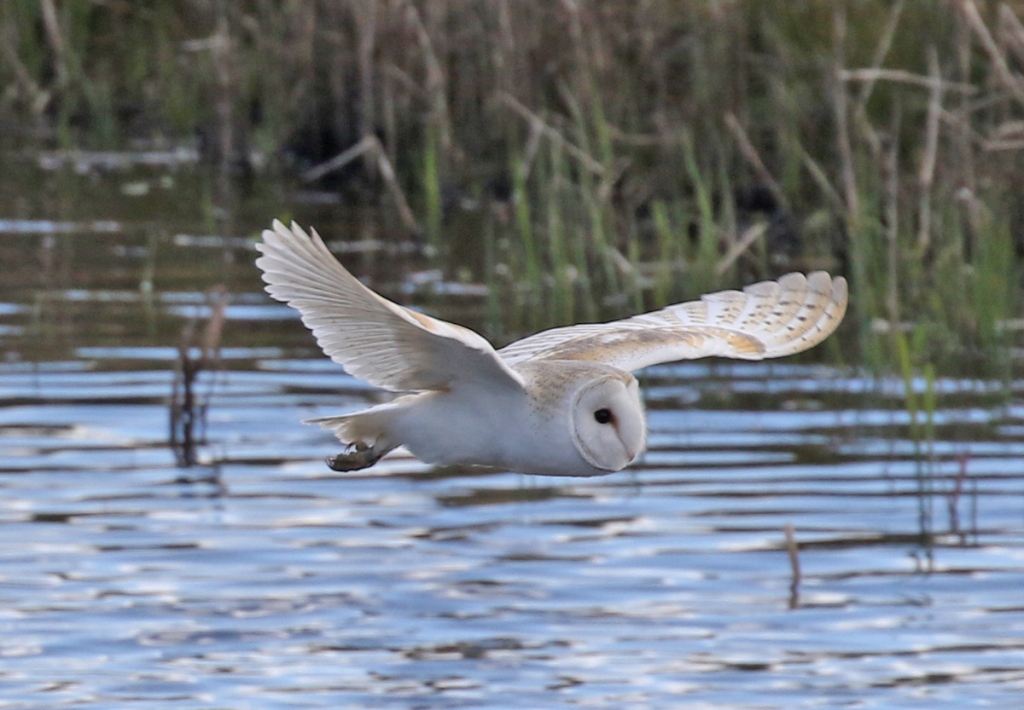
Turning our attention to Ken Hill Marshes, we picked up a Sparrowhawk disappeared away low over the water. In the reeds beyond, we could see a distant Great White Egret alongside a Little Egret. A good size comparison – the former completely dwarfing the latter.
There were plenty of ducks out on the pools, Shoveler, Gadwall and one or two lingering Wigeon. Four Barnacle Geese were presumably feral birds rather than genuine high Arctic breeders. Two Whimbrel were out on the short grass – one flew off and one disappeared down into a pool out of view as a small group of people walked along the footpath, but both reappeared after they had made it to the seawall.
We hadn’t had sight nor sound of the Cuckoo up to now, but as we walked back we heard it singing and looked ahead of us to see it perched in a dead tree. When we got alongside it, we watched it singing for a couple of minutes. A Chaffinch appeared on the branch next to it, and after a while worked up the courage to chase it off, at which point it was joined by one of the local Meadow Pipits.
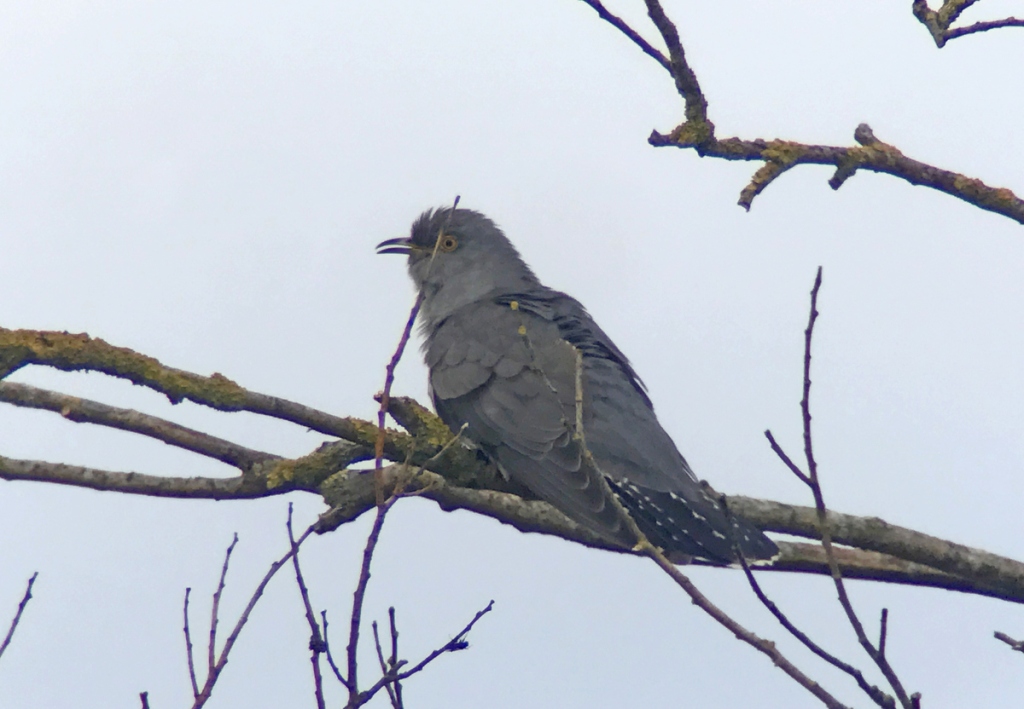
Further on, we stopped again. There were several Mute Swans flying round, mostly young birds with dull bills. An adult with a brighter orange bill was bathing in the ditch on the edge of the marshes. There were several Common Swifts zooming about over the pools and one or two swept past us over the bank and the bushes the other side. We had a go at photographing them as they passed – never easy at that speed!
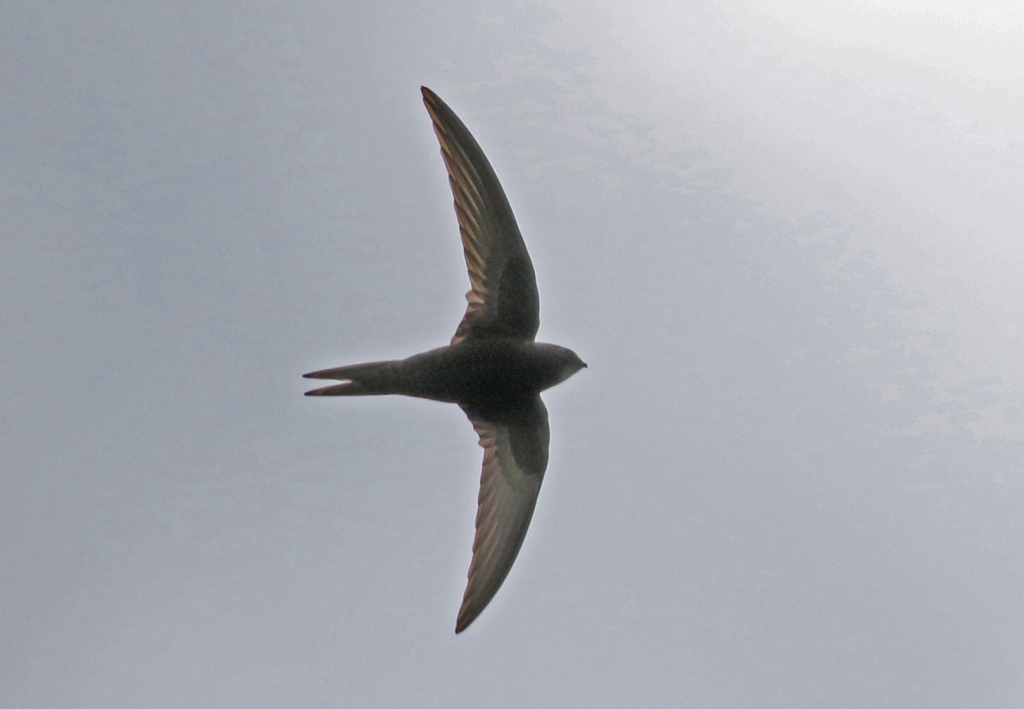
A Mediterranean Gull started calling, a distinctive plaintive miaowing, and we turned to see it circling over the nesting Black-headed Gulls, its white wingtips translucent against the sun. A Chiffchaff posed on the outside of one of the hawthorns below the path briefly. Then we made our way back to the minibus.
As we headed back round to the north coast, we made a diversion into Hunstanton and stopped by the lighthouse. The Fulmars were only just coming above the clifftop occasionally today, but one or two gave some very nice photo opportunities.
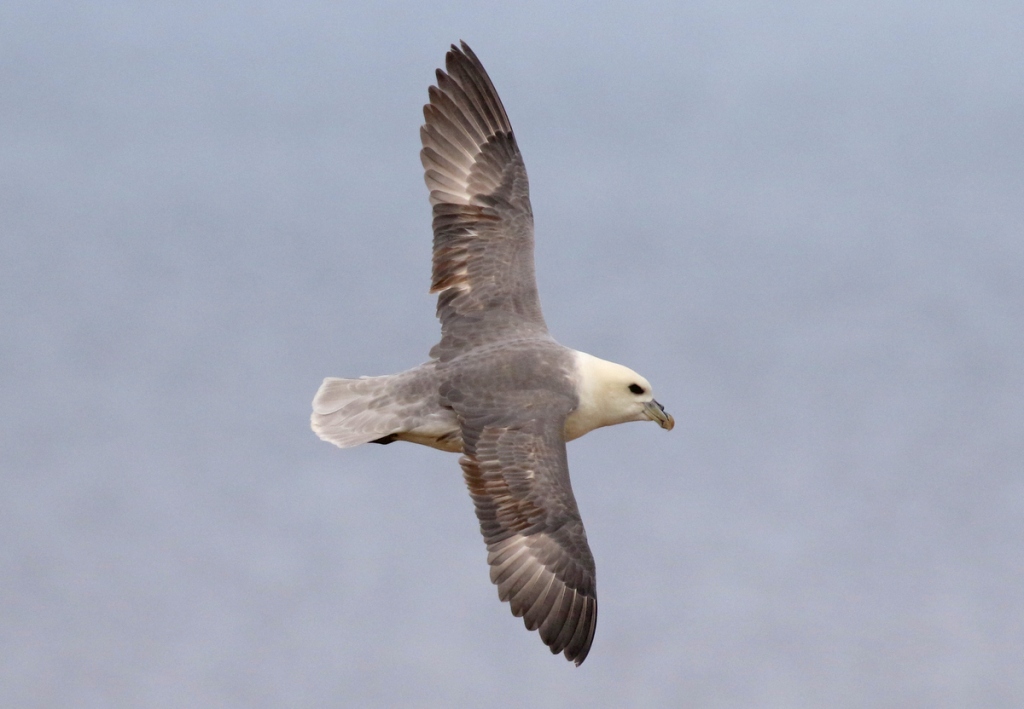
There were several House Sparrows in the fenced off vegetation on the top of the cliff and a male posed nicely on the fence. A very smart metallic Starling dropped onto the grass close to us to collect more insects – its bill was already pretty full with a large larva and a couple of flies.
Our mission for the afternoon was to find a feeding Spoonbill. After a break for a pizza in Thornham, we carried on east to Burnham Norton. Three Whimbrel were feeding out on the short grass as we got out of the vehicles. The path out towards the seawall was a bit muddy, but we managed to negotiate it without getting our feet wet.
Two Common Swifts were circling above us and started mating on the wing. They separated but stayed together and then did it again a bit further over. While we were watching the Swifts, we picked up two Hobbys way off in the distance. We watched them catching insects high above the reedbed.
There were lots of Sedge Warblers singing from the reeds along here and we could hear one or two Reed Warblers too but they were much harder to see. We finally got to see a couple of them, chasing around in the corner of the ditch below the seawall. A flock of four Yellow Wagtails flew over high, calling. They appeared to drop towards the herd of cows out in the middle of the marshes, so we made a mental note to have a look for them on our way back.
Walking along the seawall, the tide was out and we couldn’t see any Spoonbills out on the saltmarsh. The only white shapes flying in and out now were Little Egrets. There were lots of waders along here, several Avocets chasing each other in the muddy channel on the near edge of the saltmarsh and Redshanks flying back and forth over the bank. There were Lapwings here too, and one or two were displaying, singing as they performed their tumbling and rolling display flight.

There were still lots of Brent Geese out on the saltmarsh – it won’t be long now before they head off to Siberia for the breeding season. But it looked like we might be out of luck with our main target here today. When we reached the junction with the path which cuts back across the middle of the grazing marshes, we turned for one last scan over the saltmarsh. And there they were, two Spoonbills flying in from the direction of Gun Hill.
One of the Spoonbills landed in one of the big channels and we could just see it distantly from the seawall. The tide was out and there are a couple of baitdiggers’ paths out to the channel here, so we walked out to the edge, picking our way and jumping over some of the narrower runnels. Eventually we got much closer. The Spoonbill was feeding constantly in the shallow water, and appeared to be finding lots of food, regularly flicking its head back as it snapped at something.
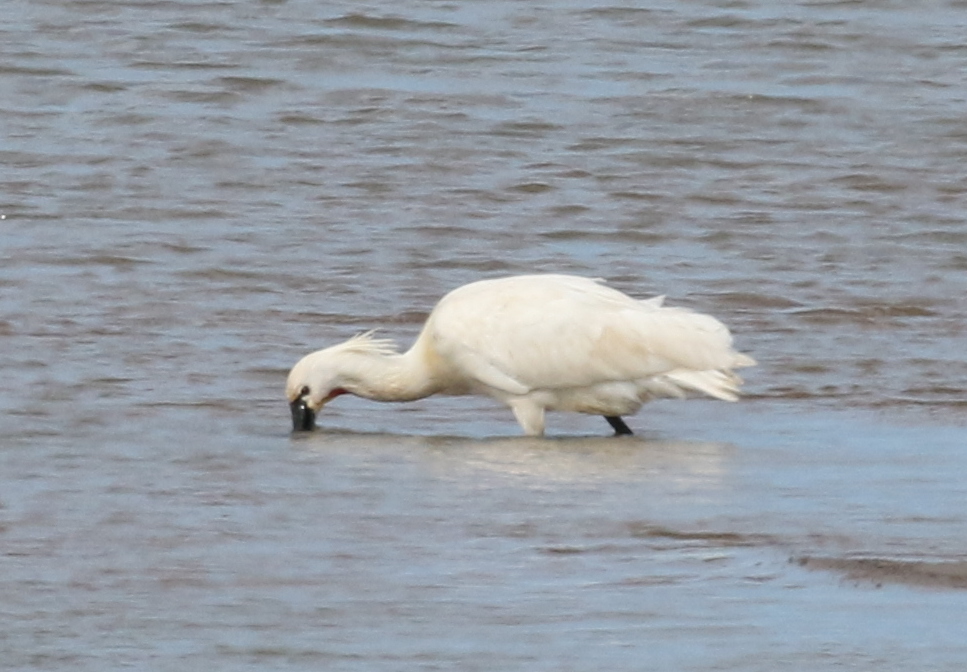
Eventually the Spoonbill disappeared round the next corner in the channel, out of view. As we made our way back to the seawall, the second Spoonbill dropped in with it. A couple of small squadrons of Cormorants flew past, heading back towards Holkham.
We dropped down onto the path the other side and walked back through the middle of the grazing marshes. The distinctive foghorn of a Bittern booming drifted over to us from the reeds. There were herds of cows on both sides of the path, but looking through the reeds we couldn’t see anything with the ones on the left of the path. We stopped at a gate from where we could see the cows the other side – they were all walking in towards the reeds by the path, and we couldn’t see anything with them at first. Two Wheatears, a smart male and a closer female, were out on the grass just beyond, migrants stopping off on their way north.
It was hard to see through the throng of cows by the reeds at first, but as some started to move further down away from us, we could see a pair of Yellow Wagtails feeding round the feet of one of them. The male with bright day-glo yellow underparts and head, the female rather creamier yellow and shades of greenish-brown.
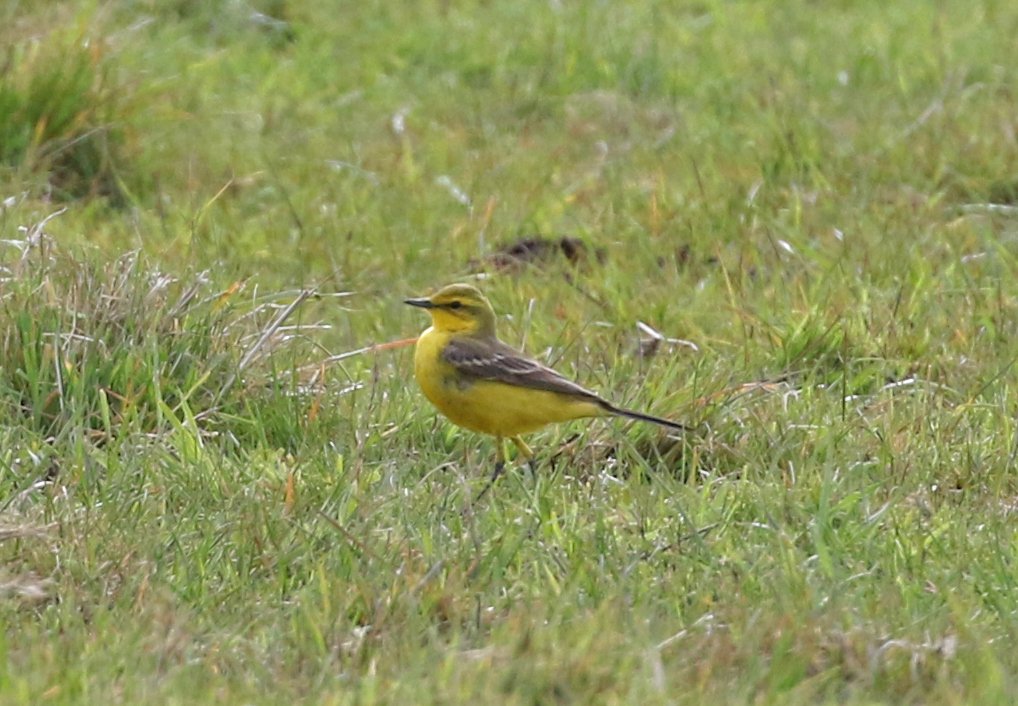
The cows moved further down so we continued on along the path to the next gate, which is where they seemed to be heading. We had just arrived when another small group of Yellow Wagtails seemed to drop in with the original pair. It is always worth looking through flocks of wagtails at this time of year, as they often contain birds from the continent with different variations of head colour.
In amongst these wagtails, we did indeed find an odd looking one. It had a greyish head and a bold white supercilium, very different to the yellowish heads of the others. It looked too bright for a female, with a very bright yellow vent and belly, but grading to paler yellow on the lower breast and pale yellowish white on the upper breast and throat, and a greenish mantle. With the paler throat, it clearly wasn’t an adult male either. These wagtails are very variable, and the different forms frequently intergrade in the zones where they meet, but the best fit for this one seemed to be a 1st summer male Blue-headed Wagtail, the race which is found across much of continental Europe but is a regular visitor here in spring.
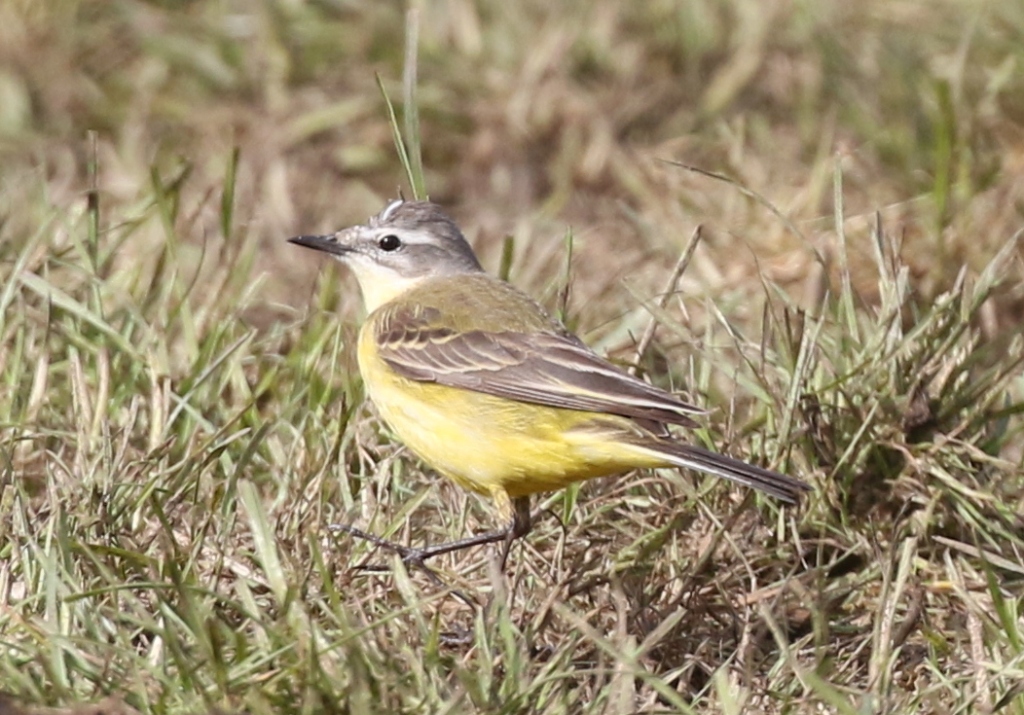
We spent some time watching the wagtails feeding in among the cows, although they became harder to see as the cows all pressed in closer to the gate. They seemed to have gathered waiting to be fed. Then when the wagtails suddenly took off and flew over the reeds, we continued on our way back.
A Little Egret was feeding in the ditch ahead of us as we got back to the parking area. As we stood by the vehicles for a minute or two, several Brown Hares were running round over the grass. A Barn Owl flew past along the edge of the grazing marshes, disappearing off along the side of the road. Time for us to call it a day.
















